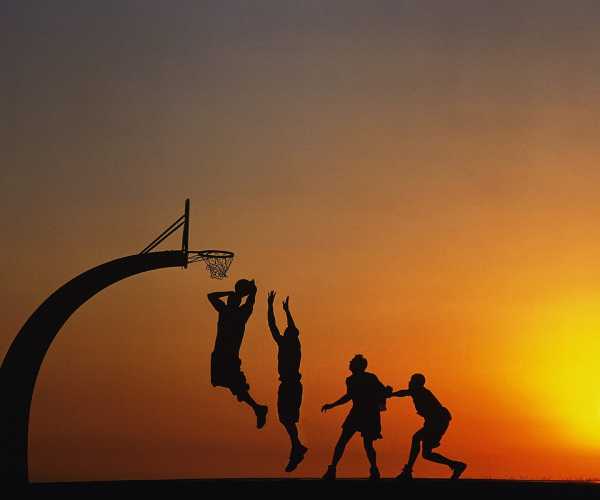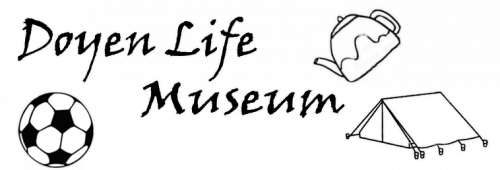am called at times a chop-stroke player. I SELDOM CHOP. MystrokesliceA chop stroke is a shot where the angle towards the player and behindthe racquet made by the line of flight of the ball and the racquettravelling down across it is greater than 45 degrees and may be 90 degreesThe racquet face passes slightly OUTSIDE the ball and down the side.chopping it, as a man chops wood. The spin and curve is from night to leftis made with a stiff wrist Irving C. wnight brother of the famous Beals.is a true chop player, while Beals himself, being a left-hander, choppedfrom the lett court and sliced from the rightThe slice shot merely reduced the angle mentioned from 4 degredown to a verv smallThe racquet face passes either NNSIDEOUTSIDE the ball according to direction desired. while the stroke ismainly a wnst twist or slap. This slap imparts a decided skidding break tothe ball, while a chop drags the ball off the ground without breakWallace F. Johnson is the greatest slice exponent in the world.rules of footwork for both these shots should be thedrive, but because both are made with a short swing and more wnst playhe need of weight the rules of footwork may be more safelyed and body position not so carefully considereddevices when your opponent is on the baseline. A chop or shice is veryhard to drve, and will break up any driving game.Is not a shot to use aganst a volley, as it is too slow to pass and toomy wory. It should be used to drop short, soft shots at thefeet of the netin. Do not strive to passwith achop or shce, except through a big opening.The drop-shot is a very soft sharply-angled chop stroke, playedwholly with the wrst It should drop within 3 to 5 feet of the net to beany use. The racquet face passes around the outside of the ball and under itwith a distinct"wrist turn. Do not swing the racquet from the shoulder nmaking a drop shot. The drop shot has no relation to a stop- volley. Thedrop shot is all wrist. The stop-volley has no wrist at all.Use all your wrist shots, chop, slice, and drop, merely as an auxilliaryto your orthodox game. They are intended to upset your opponent's gamethrough the varied spin on the ball

THE HALF VOLLEYI have now reached the climax of tennis skill: the half volley or traphot. In other words, the pick-upThis shot requires more perfect timing, eyesight, and racquet workthan any other, since its margin of safety is smallest and its manifoldchances of mishaps numberlessIt is a pick-up. The ball meets the ground and racquet face at nearly thesame moment, the ball bouncing off the ground, on the strings. This shot isa stiff-wTist, short swing, lke a volley with no follow through. The racquetface travels along the ground with a slight tilt over the ball and towards thenet, thus holding the ball low, the shot, like all others in tennis, shouldtravel across the racquet face, along the short strings. The racquet faceshould always be slightly outside the ballThe half volley is essentially a defensive stroke, since it should only bemade as a last resort, when caught out of position by your opponent's shotIt is a desperate attempt to extricate yourself from a dangerous positionwithout retreating. NEVER DELIBERATELY HALF VOLLEYNotwithstanding these truths, there are certain players who havetuned the half volley into a point winner. The greatest half volleyer of thepast decade-in fact, one of the greatest tennis geniuses of the world-George Cardia, used the stroke successfully as a point winner. R.N.Williams, the leading exponent of the stroke in the present day, achievesremarkable results with it. Major A.R F. Kingscote wins many a point,seemingly lost, by his phenomenal half-volley retums, particularly fromthe baseline. These men turn a defence into an attack, and it paysSo much for the actual strokes of the game. It is in thedepartments such as generalship and psychology that matches areJust a few suggestions as to stroke technique, and i will close this sectionAlways play your shot with a fixed, definite idea of what you ardoing and where it is going. Never hit haphazardPlay all shots across the short strings of the racquet, with the racquethead and handle on the same hitting plane for ground strokes and the headabove the handle for volleys. The racquet head should be advancedlightly beyond the wrist for ground strokes
COURT POSITIONA tennis court is 39 feet long from baseline to net. Most players thinkall of that territory is a correct place to stand. Nothing could be fartherfrom the truth. There are only two places in a tennis court that a tennisplayer should be to await the ball1. About 3 feet behind the baseline near the middle of the court, or2. About 6 to 8 feet back from the net and almost opposite the ballThe first is the place for all baseline players. The second is the netpositionIf you are drawn out of these positions by a shot which you mustretum, do not remain at the point where you struck the ball, but attain oneof the two positions mentioned as rapidly as possibleThe distance from the baseline to about 10. feet from the net may beconsidered as " no-man's-land" or the blank." Never Inger there, since ashot will catch you at your feet. After making your shot from theas you must often do, retreat behind the baseline to await the return,so you may again come forward to meet the ball. If you are drawn in shortand cannot retreat safely, continue all the way to the net postion.Never stand and watch your shot, for to do so simply means you areout of position for your next stroke. Strive to attain a position so that youalways arrive at the spot the ball is going to before it actually ames. Doyour hard running while the ball is m the air, so you will not be hurried inyour stroke after it bouncesIt is in learning to do this that natural anticipation plays a big roleSome players instinctively know where the next retum is going and takeposition accordingly, while others will never sense it. It is to the latterclass that I urge court position, and recommend always coming in frombehind the baseline to meet the ball. since it is much easier to run forwardthan backShould you be caught at the net, with a short shot to your opponent, donot stand still and let him pass you at will, as he can easily do Pick out theide where you think he will hit, and jump to, it suddenly as he swings. Ifyou guess right, you win the point. If you are wrong, you are no worse off,since he would have beaten you anyway with his shotA notable example of this method of anticipation is Norman E.Brookes, who instinctively senses the stroke, and suddenly bobs up infront of your best shot and kills it. Some may say it is luck, but, to mymind. it is the reward of brain workYour position should always strive to be such that you can cover thegreatest possible area of court without sacrificing safety, since the straighthot is the surest, most dangerous, and must be covered. It is merely aquestion of how much more court than that immediately in front of theball may be guardedA well-grounded knowledge of court position saves many points, toay nothing of much breath expended n long runs after hopeless shotsIt is the phenomenal knowledge of court position that allows ARFKingscote, a very short man, to attack so consistently from the net.Wallace F. Johnson is seldom caught out of position, so his game is one ofextreme ease One seldom sees johnsonhard on a tennis court Heis usually there awaiting the ball's arrival.Save your steps by using your head. It pays in the end. Time spent inleaming where to play on a tennis court is well expended, since it retumsto you in the form of matches won, breath saved, and energy conservedIt is seldom you need cover more than two-thirds of a tennis court, sowhy worry about theessary portions of it?
